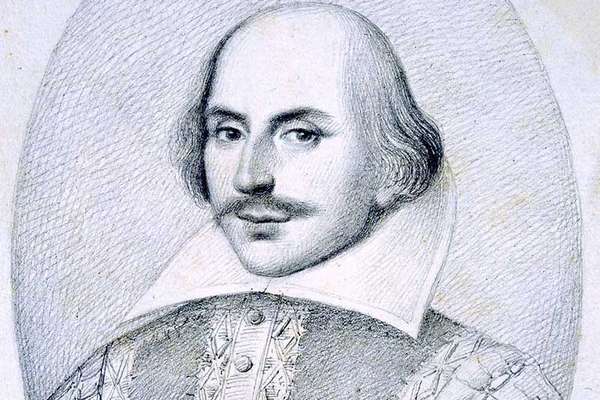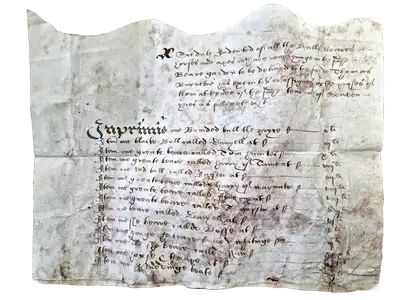Record revealed
List of animals held in the ‘Bear Garden’ in Elizabethan Southwark
This deed reveals some of the animals kept to perform on the Tudor stage or in arenas, and how they were valued. It includes ‘one great bear called Tom Hunckes’, an ‘old she bear called Nan’, several bulls, a horse and an ape.
Images
Image 1 of 2

Full deed to the land in Southwark, with bear schedule attached.
Image 2 of 2

Close-up of the bear schedule.
Translation
A schedule indented of all the bulls, bears, horses, and apes which are remaining in the said bear garden to be delivered to the said Thomas Burneby, his executors, or assignees, or the prices of them at the end of the said term of seven years as follows, vizt.
Inprimis [First] one branded bull the price v li [£5]
Item one black bull called Danyell at iiii li [£4]
Item one great bear called Tom Hunckes x li [£10]
Item one great bear called Harry of Tame at viii li [£8]
Item one red bull called Angler at iiii li [£4]
Item one great bear called Harry of Warwicke viii li [£8]
Item one great bear called Jeremy at viii li [£8]
Item one great bear called Sampson at viii li [£8]
Item one bear called Danyell at vi li [£6]
Item one she bear called Bosse at v li [£5]
Item one young she bear called Whitinge iii li [£3]
Item one old she bear called Nan xxx s [30 shillings]
Item one horse & the ape at xl s [40 shillings]
Item one Puddinge boate ii li [£2]
Why this record matters
- Date
- 15 December 1590
- Catalogue reference
- C 146/8581
Prior to the 20th century, deeds like this were how a person would prove their ownership of a piece of land. This deed, from the 16th century, describes a lease of land and tenements (a legal term meaning the right to hold the land) in Southwark by Thomas Burneby of Watford to Richard Reve, citizen and glazier of London.
Deeds were legal documents, and so often include precise details about the lands and tenements named, along with any adjoining tenements, so that they clearly describe the boundaries of the specified land.
Elizabethan Southwark was home to many theatres and arenas. This deed alludes to these forms of entertainment because it describes a piece of land called the ‘Bear Garden’, which kept all the animals used for these events.
The deed also describes the animals that were kept in this ‘Bear Garden’. Attached to the grant is a schedule of all of them, with their names and values, such as 'one black bull called Danyell' and 'one she bear called Bosse'.
One of the terms of the lease was for Richard Reve, the recipient of these lands, to return the animals to Thomas Burneby at the end of the lease or pay him their value.
The document now has real value itself: it provides a unique snapshot into the sorts of animals used in plays and entertainments during the reign of Elizabeth I.
Featured articles
The story of
William Shakespeare

Through documents held in The National Archives, we can gain an incredible insight into the life of one of the world's most famous playwrights.
